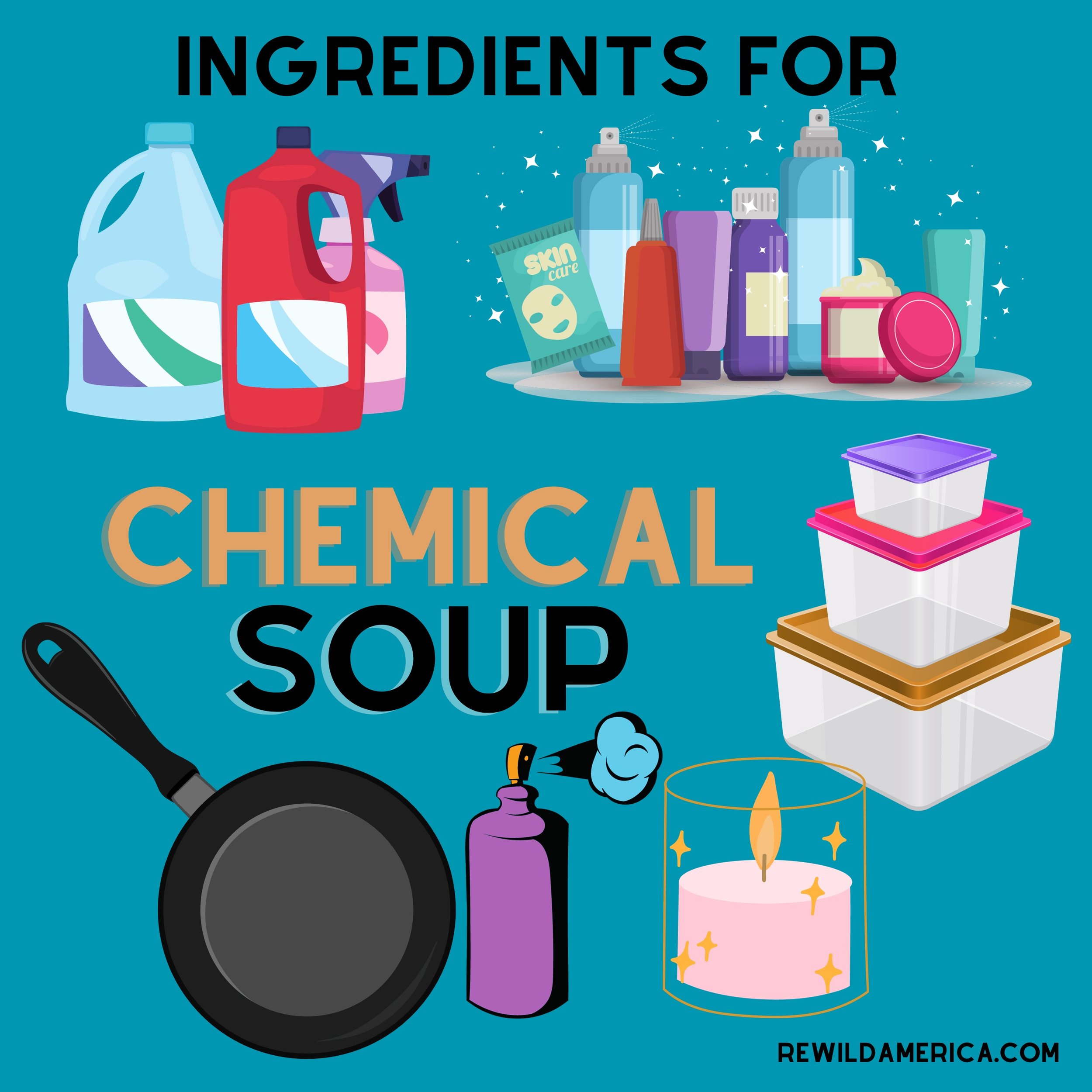5 Common Household Toxins and Natural Alternatives for a Healthier Home
All too common household items sabotaging your health.
Our homes are supposed to be sanctuaries, but many people are awash in a chemical soup. Households contain everyday items that, unbeknownst to many, are potentially harmful. Here's a dive into the top five toxic items commonly found in homes and alternative solutions to create a better environment and protect our health.
1. Chemical Cleaning Products
The Problem: Chemicals in conventional cleaning products like ammonia, chlorine bleach, and phthalates are all linked to adverse health effects. Ammonia, for example, can cause severe lung irritation and exacerbate asthma symptoms. Chlorine bleach poses similar respiratory risks and can be corrosive to the skin and eyes. Moreover, some cleaning products contain endocrine disruptors like phthalates, which interfere with hormonal balance, potentially leading to reproductive issues.
The Alternative: Consider switching to all-natural cleaning solutions like vinegar, baking soda, and lemon juice. It’s easier than you think to make all-natural and effective cleaning products. By making this switch, you're eliminating exposure to toxic substances and reducing plastic waste from disposable bottles.
These simple and cheap ingredients can be combined in numerous combinations to create all-natural cleaning products for any task.
Sources:
EWG Guide to Cleaning Products
Endocrine Disrupting Chemicals
Lung Safe Cleaning Products
2. Plastic Containers
The Problem: Bisphenol A (BPA), commonly found in plastic containers, is an endocrine disruptor, mimicking natural hormones like estrogen. This interference can contribute to various health problems, including fertility issues, developmental delays in children, and an increased risk of certain cancers.
The Alternative: Use glass or stainless-steel containers that don't leach chemicals. Doing so will safeguard your hormonal balance and help reduce your overall toxic load. Don’t fall for using the plastic that says “BPA Free,” there are many other forms of the chemical and others to be wary about in plastic.
Ditch the plastic - switch to glass and stainless steel. Wood and ceramic are also great for food prep and storage.
Sources:
National Institute of Environmental Health Sciences on BPA
BPA, Phthalates, and Chemicals Used in Plastic
3. Non-Stick Cookware
The Problem: The coatings used on non-stick pans usually contain chemicals like polytetrafluoroethylene (PTFE), commonly known as Teflon. When heated to high temperatures, PTFE can release toxic fumes that are harmful when inhaled, leading to "Teflon flu," a condition with flu-like symptoms. Long-term exposure to these fumes may even contribute to chronic respiratory issues and certain types of cancer.
The Alternative: Use cookware made from cast iron, stainless steel, or ceramic. Apart from their non-toxic nature, these materials are often more durable and better heat conductors, making for a healthier and more eco-friendly kitchen. A well-cared-for cast iron pan can last for generations.
Cast iron and stainless steel cookware - don’t forget to ditch the plastic utensils and cutting boards as well.
Sources:
American Cancer Society on Teflon and PFOA
Undisclosed PFAS Coatings Common on Cookware
4. Air Fresheners & Paraffin Candles
The Problem: The VOCs (Volatile Organic Compounds) in many air fresheners can irritate the eyes and throat and contribute to chronic respiratory problems. Some VOCs are also endocrine disruptors. Moreover, many aerosol sprays contribute to indoor air pollution, which is often more polluted than outdoor air, according to the EPA. On the same note, paraffin candles, while popular, are derived from petroleum. As they burn, they release soot and harmful chemicals like toluene and benzene, which are known carcinogens. The soot from these candles can also exacerbate asthma, other respiratory problems, and migraines.
The Alternative: Utilize essential oils in a de-fuser or simply open a window for natural air circulation. Use soy or beeswax candles with natural wicks that achieve their scent with infused essential oils. Switching to natural air fresheners and soy or beeswax candles reduces exposure to harmful chemicals and promotes better indoor air quality while reducing reliance on synthetic chemicals.
Beeswax candles and essential oil easily replace paraffin candles and “fragrance.”
Sources:
EPA on VOCs
Burning of Candles in Indoor Air
5. Cosmetics and Personal Care Products
The Problem: Many cosmetics and personal care products contain harmful ingredients like parabens that can be endocrine disruptors. Phthalates, another common ingredient, are associated with developmental, reproductive, and neurological damage. The skin absorbs these chemicals, which enter the bloodstream, posing long-term health risks.
The Alternative: Look for natural alternatives that use organic ingredients, or consider making your own. Years of commercials and marketing lead us to believe we need more personal care products than necessary. Much of our skin health is derived from what we put in our body, not on it – you can protect your hormones and save yourself a ton of money by eliminating many of these unnecessary lotions and potions.
Cosmetics and personal care products are full of deceitful marketing. Bottom line - read the ingredients, and don’t put anything on your skin you couldn’t eat.
Sources:
Toxic Chemicals in Cosmetics
Chemicals of Concern in Your Cosmetics
Opting for mindful selections in the products we incorporate into our living spaces can have a profound, cumulative impact on our well-being. Given the inescapable exposure to various environmental toxins—be it pesticides on crops, contaminated tap water, or emissions from industrial activity and transportation—it becomes crucial to seize control where we can. Specifically, we can minimize chemical exposure within the sanctuaries of our homes. Such deliberate alterations not only serve as a testament to conscious living but also act as a catalyst for fostering more resilient and healthier communities.






